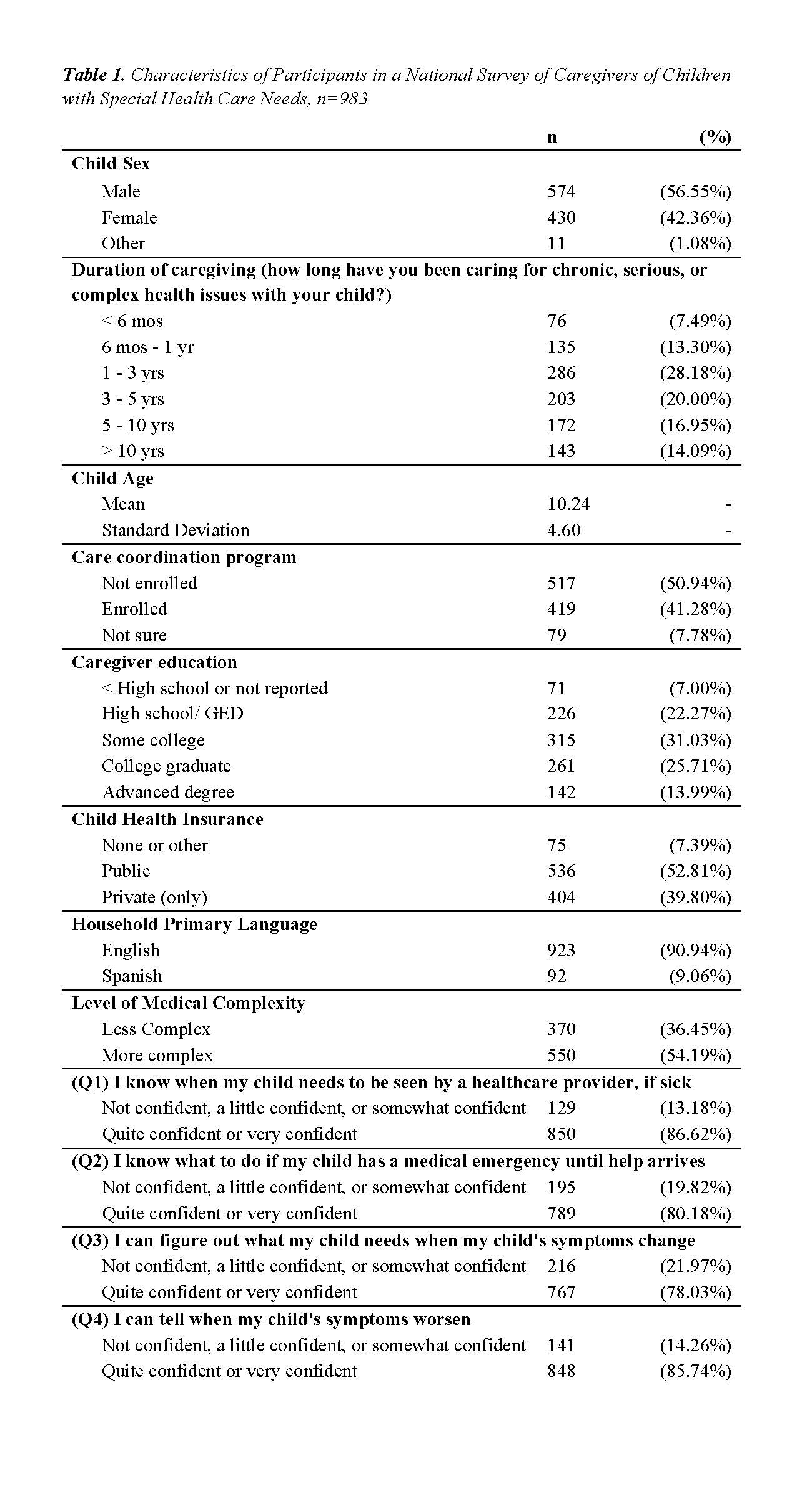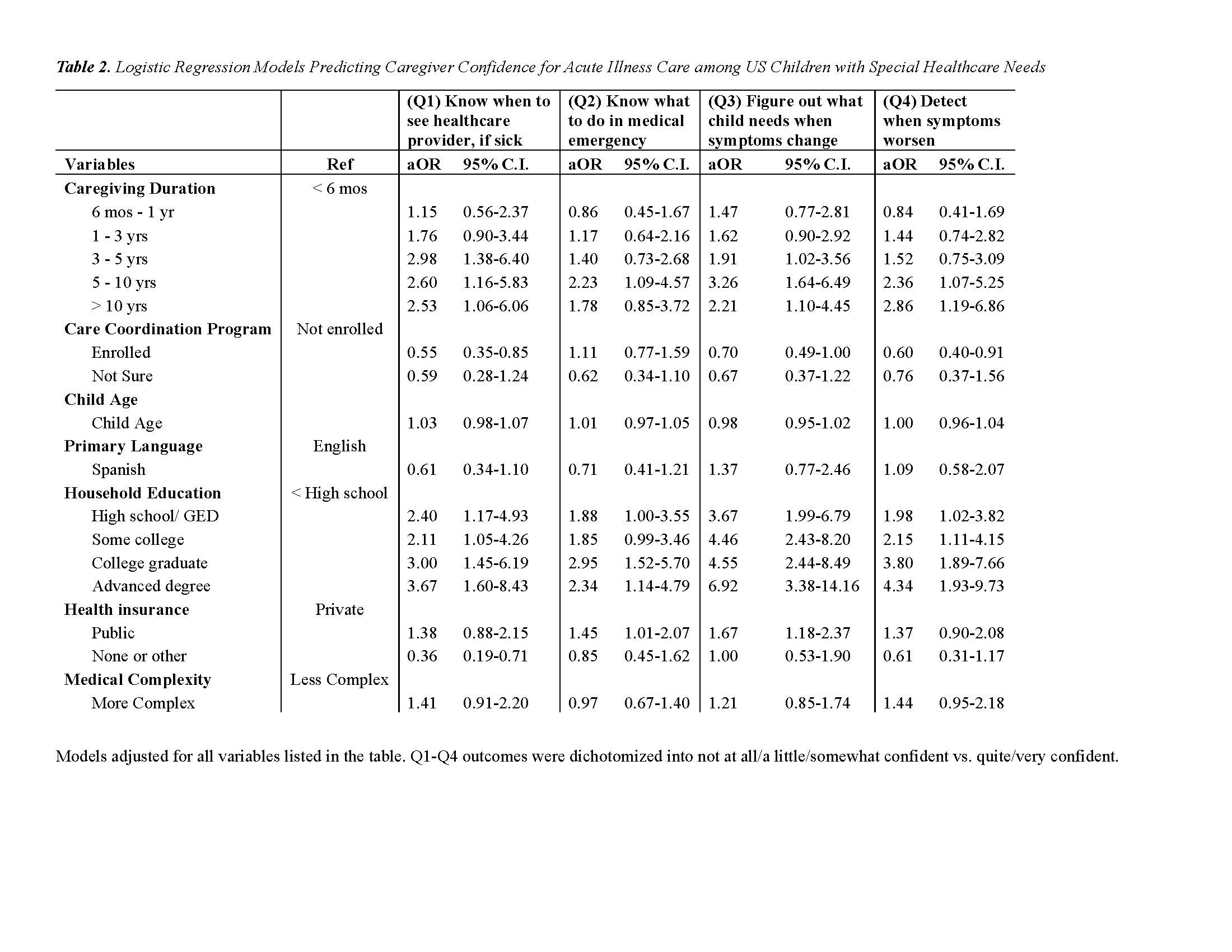Children with Chronic Conditions
Session: Children with Chronic Conditions 1
253 - Adjusting to Healthcare at Home: Caregiving Duration and Confidence during Acute Illnesses
Friday, May 3, 2024
5:15 PM - 7:15 PM ET
Poster Number: 253
Publication Number: 253.583
Publication Number: 253.583

George A. Verdelis, BS
Clinical Research Coordinator
University of Wisconsin School of Medicine and Public Health
MADISON, Wisconsin, United States
Presenting Author(s)
Background: Caregivers (CGs) manage daily care for children with special healthcare needs (CSHCN), including acute illnesses. Although CG confidence can predict hospitalization risk, factors influencing confidence, including length of time as a CG, are poorly understood.
Objective: To investigate the association between duration of caregiving for CSHCN and confidence around acute illnesses.
Design/Methods: We conducted a national, cross-sectional survey of English and Spanish speaking CGs of CSHCN meeting ≥1 CSHCN screener criteria. Children were considered more complex when meeting ≥3 screener criteria and less complex when meeting only the prescription medications criterion. Participants were recruited in 9/2023 from a national Qualtrics panel. The key exposure, CG duration, was measured in six time intervals proposed by family research partners. Four outcomes of acute illness care confidence were dichotomized (not at all, a little, or somewhat confident vs. quite or very confident): knowing when a child needs to be seen by a healthcare provider (Q1); knowing what to do if a child has a medical emergency until help arrives (Q2); figuring out what a child needs when symptoms change (Q3); and detecting when a child’s symptoms worsen (Q4). Multivariable logistic regressions identified associations between CG duration and each outcome, adjusting for demographic and health confounders.
Results: Among 983 respondents with complete data (97% of the sample), caregiving duration was evenly distributed across time categories (Table 1). Participants reporting confidence for each outcome ranged from 78% to 87%. Longer duration as a CG predicted Q1, Q3 and Q4, particularly after 3-5 years (Table 2). For example, compared to < 6 months CG duration, those with >10 years had aOR (95%CI) 2.86 (1.19-6.86) greater odds of confidence detecting when symptoms worsen and 2.21 (1.10-4.45) greater odds of confidence figuring out what their child needs when symptoms change. CG duration was poorly associated with Q2 (managing medical emergency). Higher household education had a stepwise relationship with each outcome.
Conclusion(s): Caregiving confidence for acute illness management was associated with caregiving duration. The data illustrate learning curves experienced by CSHCN caregivers, which may extend for several years. However, confidence for some CG activities may not change with time. Future research should explore whether increased confidence with longer CG duration is also associated with better health outcomes, and whether interventions can accelerate the pace of confidence attainment.


